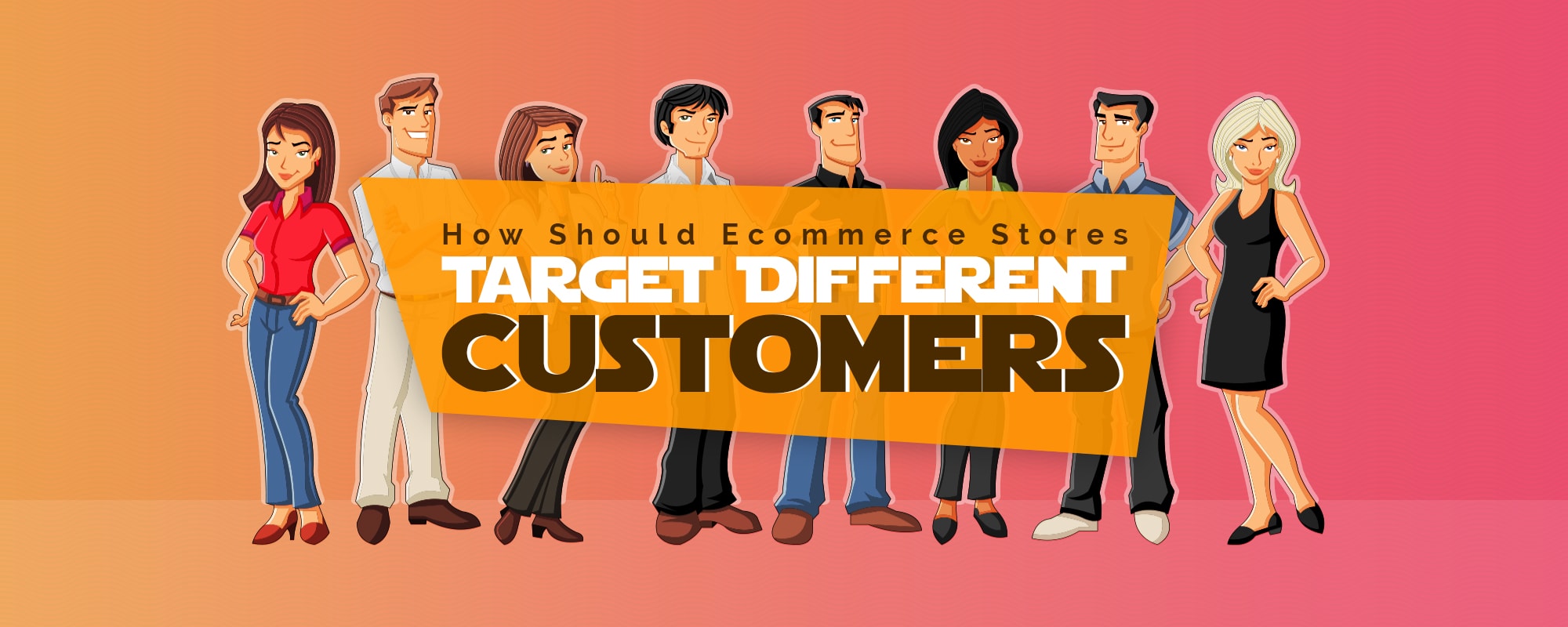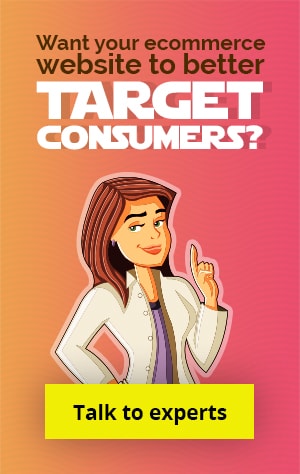Every second customer is not the same, with each having their own individuality. In the current market dynamics, ecommerce marketplaces should also have a marketing strategy keeping in mind the diversity among their prospective customers. Generally, we can classify customers into two categories based on their shopping behavior and customers’ relationship status with the ecommerce website.
Shopping Behavior
Shopping behavior refers to the way a person likes to shop from an ecommerce store. When we analyse the shopping behaviour of the customers we can easily categorize them. Let us take a closer look:
1. Product Focused: The ones who know what they want. They don’t like to search for other options until or unless, the item they want is not available, then they will go for the item that is closest to their first choice. For them, all that matters is how quickly and easily they can buy it.
How to Approach Them: Speed is the key here. You want pages that load fast, images that are clear and of high quality, descriptions that are detailed and accurate, and a streamlined checkout.
2. Browsers/Butterflies: This particular consumer group is probably the trickiest one to get hold of, but not the hardest by any chance. The primary reason for us saying so is that just like butterflies, people belonging to this customer group like to surf on various ecommerce websites and see who’s offering what. May be they are looking for a travel booking site with amazing packages, may be they want to see what all activities they can indulge in after reaching their tourist destination. They are more or less like window shoppers. You never know, they might be on your website only to kill time, and this is where the trick comes into play.
How to Approach Them: Make an offer they can’t refuse. Leverage their interest to know what’s new, and show them exactly what they want: latest items and offers. Give them a good browsing experience.
3. The Choosy Ones: Choosy buyers are very particular about what they want to buy and from where they want to buy. They also pay special attention to what other customers have to say about something of their interest. Their planning to buy something begins with researching for days, weeks, and sometimes, even months. They want details, and they want facts. Nothing short of it will suffice for them.
How to Approach Them: Their buying behavior revolves around descriptions; use it for your benefit. Be descriptive about your products, be eloquent. Mention all the details of the items, add product images and videos, add user reviews and ratings. Make sure your details are not biased, because the choosy customer group can find out all the pros and cons of a product.
4. Bargain Driven: This is another interesting consumer group because for them, bargain doesn’t always mean discount. Yes, these people are attracted to discounts, deals, offers and vouchers, but that’s not all they want. If they see they are entitled for free shipping after making a purchase of a certain amount, they’ll be happy to pay. When they know a combo pack offers a better deal, they’ll buy it even if they don’t need the other items.
How to Approach Them: The first and foremost thing to do is to tell them how much discount you have offered. Display the original price, the current price and the discount a customer gets (in percent); highlight discounted items in the catalog. As we mentioned earlier, entitling them to free shipping will also motivate them to buy more.
5. One Time Visitors: One time visitors may be visiting your website for numerous reasons, and they can belong to any of the other consumer groups too! May be they came to your website because you have exclusive rights of selling something that they want to buy, may be they received a discount coupon for your website, or may be stumbled upon your website while searching for a particular item. Thing is, the reasons can be many, but most of one time buyers face a common problem: the compulsion of registration.
How to Approach Them: First of all, let them checkout as a guest, don’t force them to register at your website. True, it will only make them enter all their details again, if they revisit your website to buy something, but give them the freedom to choose. It’s about giving them a user experience that will make them want to come again, to become a registered user.
6. Impulsive: This is one of the most interesting consumer groups you can ever come across. You never know what makes them an impulsive shopper, but one thing is for sure, once they know they want something, they’ll find it any which way possible. This particular consumer group belongs to various other groups; researchers, butterflies, bargain buddies, you name it, and you’ll have them anywhere, and everywhere. They may just want to have that white shirt, or maybe the shoes they were looking for are now available for a discount. May be they came to your store because the phone they wanted to buy is available at your store only. So, you know, impulse knows no bounds, and neither do the impulsive buyers.
How to Approach Them: The first thing you need to focus on is a clear design with easy navigation and quick checkout. The quicker you can move them through the checkout funnel, the better.
7. Cautious CODs: This is one consumer group that we like to call “once bitten, twice shy”. Otherwise a bunch of amazing people, customers belonging to this group have a hard time making online payments, no because they don’t know how, but because they don’t want to. They don’t mind paying a few extra bucks for cash on delivery, but they don’t feel like giving their personal and financial details.
How to Approach Them: We are sure you’d have a secure and sturdy ecommerce website. Even then, to establish more trust and sense of security among this consumer group, it would be a good idea if you flaunt your security seals, keep you webpages simple and easy to the eyes, and refrain from using too many marketing messages.
Now that we have understood how people of different shopping behaviors like to carry out their shopping and how to approach them, it’s time to see how a customer’s relationship with an ecommerce business affects the methodology to approach them.
Also Read: 101 Actionable Tips From Experts On Running An Ecommerce Marketplace
Customer Relationship Status
As the name of the category suggests, we will proceed with the details right away:
1. Potential Customers: Also known as the lead, the potential customer is one who has a high probability of bringing revenue and adding value to your business. The cutthroat competition going on in the ecommerce industry doesn’t allow any room for losing on a potential customer. They are here, at your website, because they feel you can give them the user experience they’ve been looking for.
How to Approach Them: The best way to convert them is to give them the value you promised. Be it your services, your website’s ease of use or anything, they are here because of a link that intrigued them.
2. New Customers: New customers are mostly the ones who you were able to convert from potential ones. In other instances, these are the people who just happened to use your website for shopping once and happened to like it. You get a new customer when the potential customer bought something from your website and generated revenue for you.
How to Approach Them: The first thing to do is to thank them for choosing you. Give them a token of gratitude, a coupon, discount of some sort that they can avail on their next purchase. It’s also a good idea to give free shipping for the first time. Giving them an amazing experience will keep them coming for more, which brings us to our next kind of customer,
3. Loyal Customers: This is one consumer group that we all absolutely love, and yet most of us make a mistake of taking them for granted, don’t we? These are the amazing people who keep coming back to the same website to buy anything and everything they want. We also call them repeat customers, and yet, many of ecommerce website owners forget to appreciate them.
How to Approach Them: Give special rewards to these consumers. Give them a bigger window for festive discounts. A good idea would be to let them avail the offers before you launch them for everybody else. Giving them special treatment will make them feel appreciated and they’d like to stay with you.
4. Lost Customers: The user group that ecommerce businesses lost because, well, either they couldn’t convert, couldn’t offer a good user experience consistently, or because some other e-business gave them better deals and offers. For any reason, one company’s gain can mean some other company’s loss.
How to Approach Them: It all begins with analyzing where things went wrong. Check your sales funnel to see how many points of failures it has and see how to overcome these issues. Retargeting comes later, as there would be no benefit of approaching a lost customer if you don’t know why they left in the first place. Observe, analyze and plan accordingly. Try offering dedicated promotions to bring them onboard again, and just like in the case of browser butterflies, make an offer they can’t refuse.
Conclusion
Running a successful ecommerce business means you got to keep all the types of customers in mind. An amazing website will be the one that is built around all of these consumer groups. If you analyze carefully, you’ll see that despite the 11 types of customers we discussed, the methods to approach them don’t vary by a great deal. Chances are when you are optimizing your efforts for one consumer group; you’ll be taking care of the other group simultaneously. Device your methodologies, offers and your website strategically, and you can bring them all in to do business with you. Have fun!

